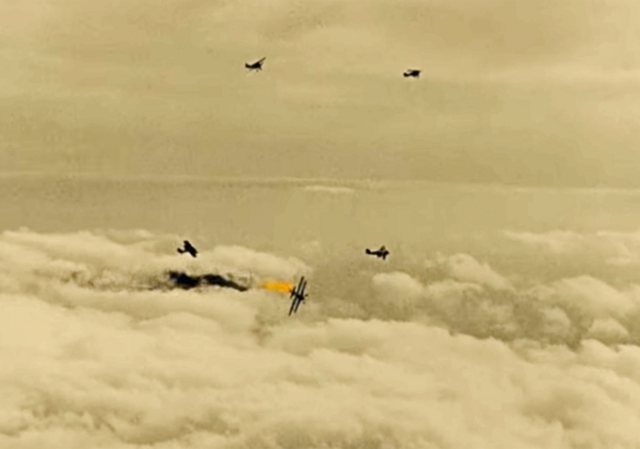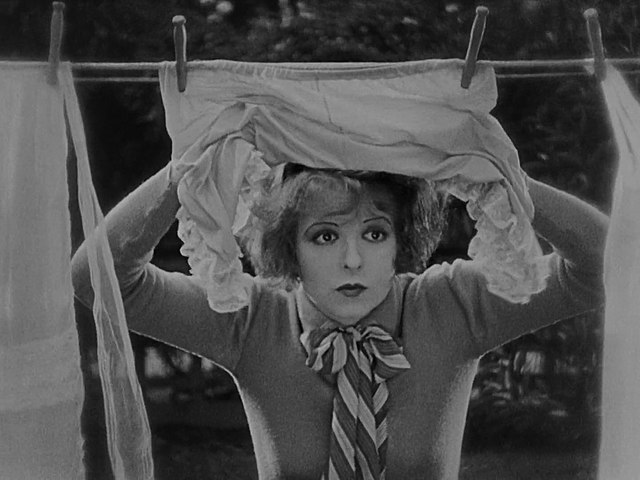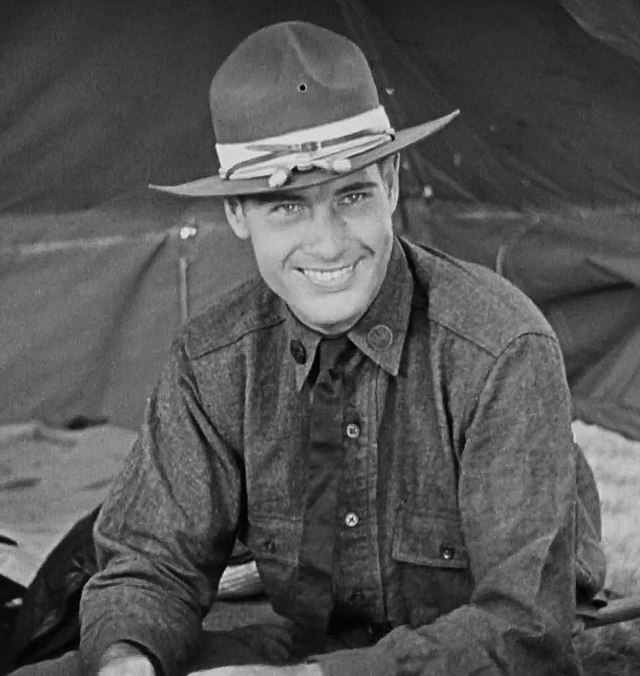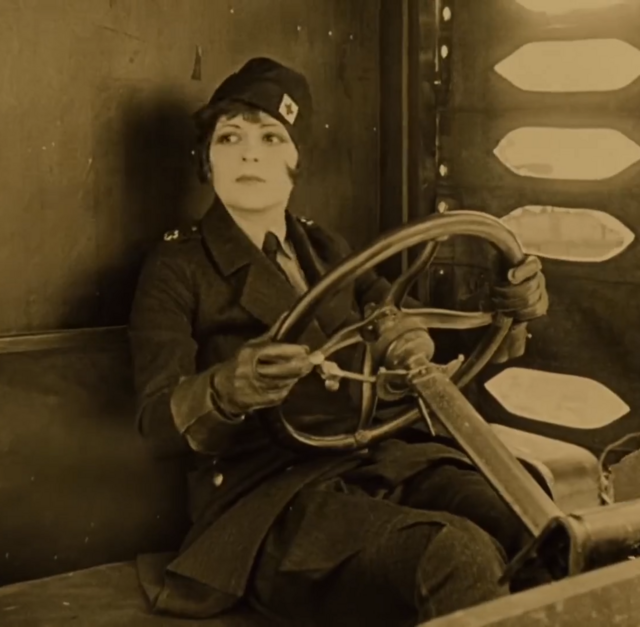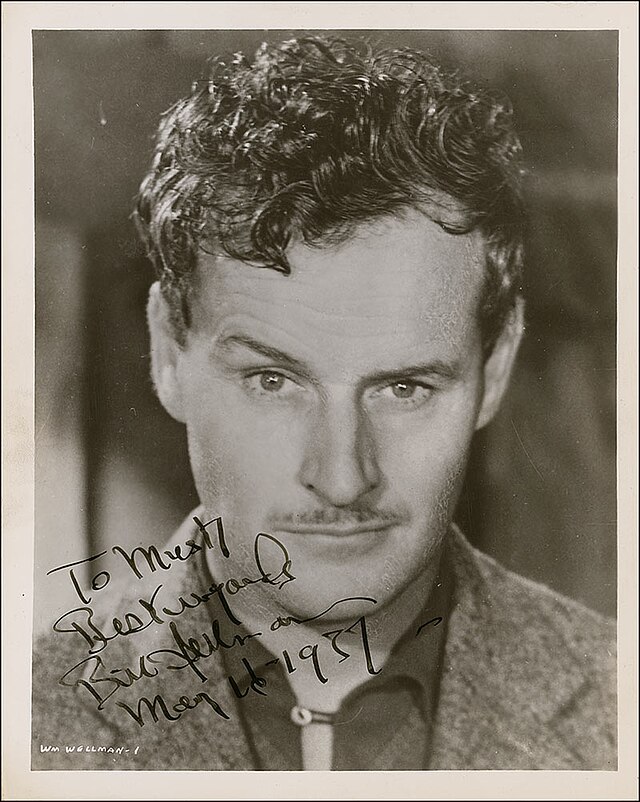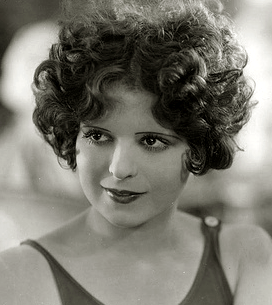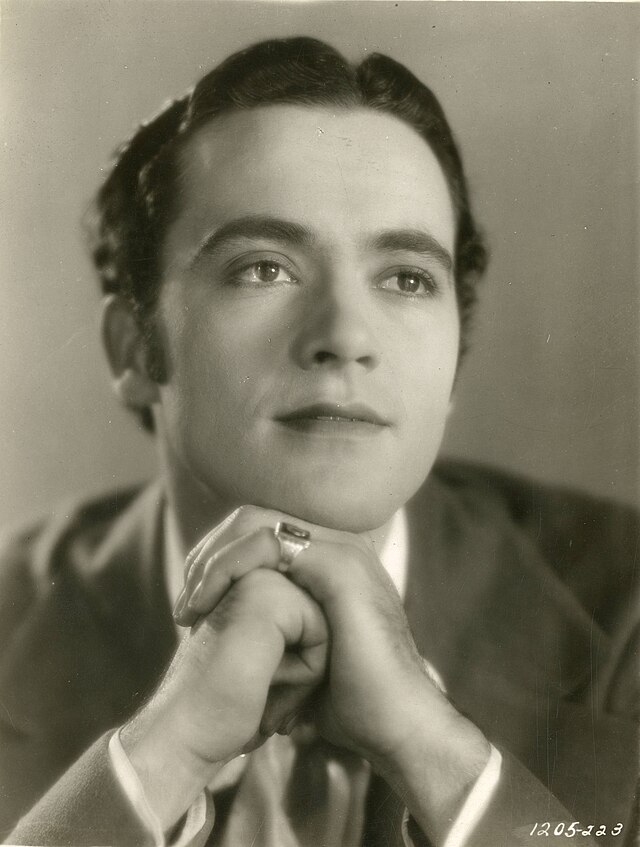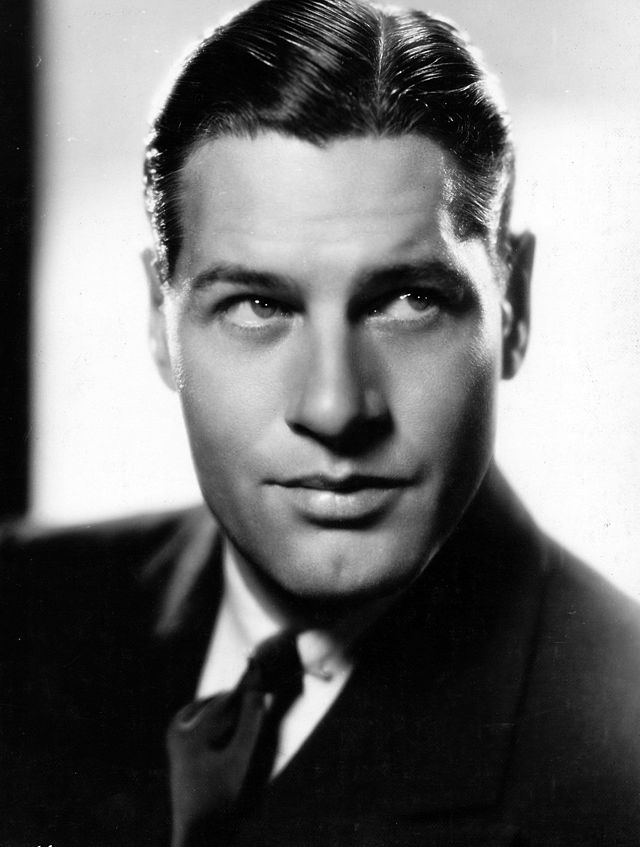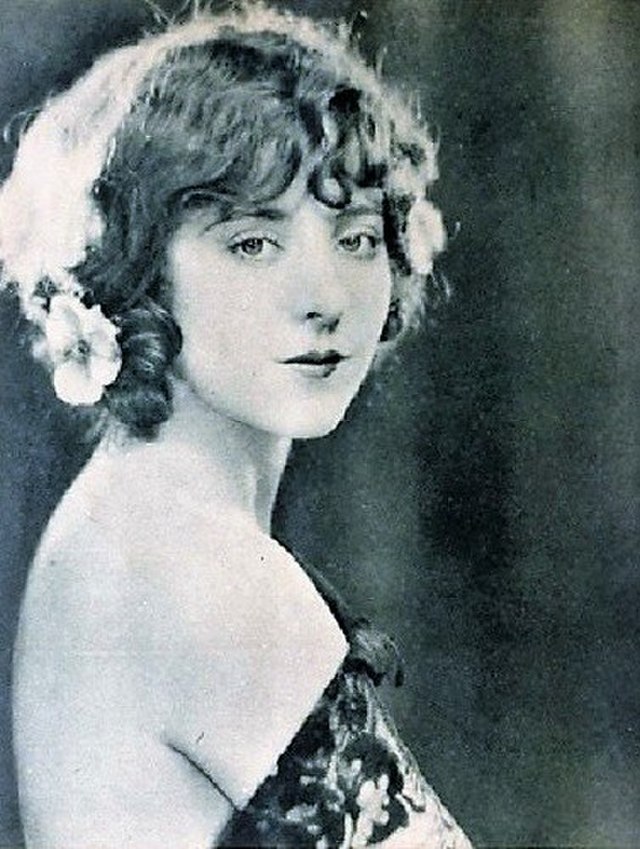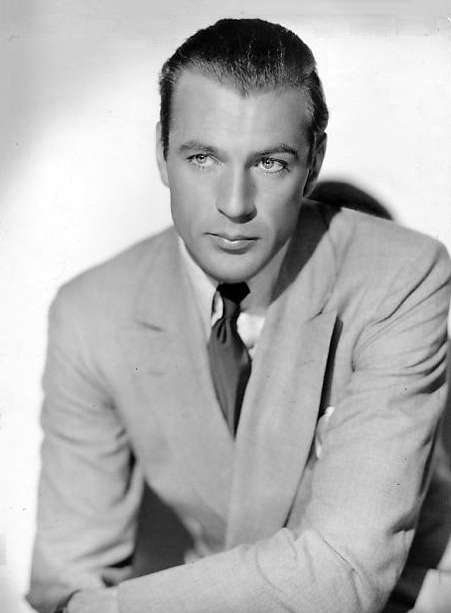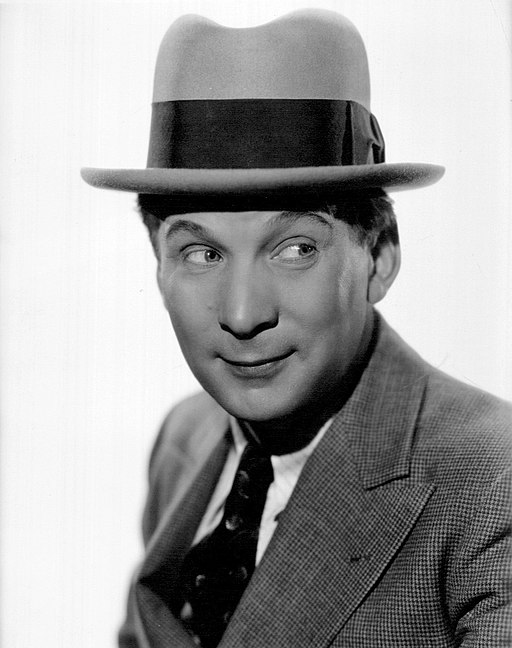Wings – 1927
Summary of Wings (1927)
Set during World War I, Wings is both a grand war epic and an intimate human drama. At its core, it's a story about friendship, love, loss, and the devastating impact of war—not only on the battlefield but in the hearts of those who endure it.
The Story
Jack Powell and David Armstrong are two young men from the same small American town. Jack is from a working-class background, while David is wealthy and refined. Both fall in love with the same woman, Sylvia Lewis, though Sylvia loves David. Jack is oblivious to this, believing that Sylvia returns his affection.
Meanwhile, Mary Preston, the girl next door, is in love with Jack, but he only sees her as a friend. This love triangle is complicated, tender, and full of unspoken longing.
When the U.S. enters the war, Jack and David enlist as Air Corps pilots. Their initial rivalry turns into a deep, fraternal bond forged in training and strengthened in the air. They experience the highs of youthful adventure and the harrowing realities of war together. Clara Bow’s character, Mary, also volunteers for service, driving ambulances near the front lines.
The film follows their journey through the war, from training to brutal aerial dogfights in Europe. The emotional climax comes during a massive Allied offensive where Jack, believing David is dead, becomes consumed by rage. In a tragic twist of fate, Jack unknowingly shoots down a German plane piloted by David, who had survived earlier and stolen an enemy aircraft to return. Jack cradles David as he dies, devastated by what he’s done.
After the war, Jack returns home a hero but emotionally shattered. He visits David’s family, full of guilt and remorse, and seeks forgiveness. Mary, who has stayed loyal throughout, finally reunites with Jack in a bittersweet, redemptive ending.
________________________________________
Analysis of Wings
Cinematic Innovation and Realism
Wings is notable not just for its emotional storytelling but for its groundbreaking technical achievements. Director William A. Wellman, himself a former combat pilot in WWI, brought unmatched realism to the film. The aerial dogfights were filmed with real planes, real pilots, and real danger. Cameras were mounted on planes—an astonishing feat in the 1920s—to put viewers in the cockpit with the pilots. The result is still thrilling nearly a century later.
It was one of the first films to use moving camera techniques during action scenes, creating a kinetic sense of speed and danger. The air battles are choreographed like a ballet of destruction in the sky, blending technical mastery with raw emotion.
Themes
• Friendship and Brotherhood: The evolving relationship between Jack and David is the emotional spine of the film. They begin as rivals and grow into brothers. The tragedy of Jack accidentally killing David reinforces the cruelty and chaos of war.
• Love and Loss: The film explores unrequited love, hidden emotions, and the sacrifices made in silence. Mary’s loyalty to Jack, even when unrecognized, adds emotional depth to the story. Sylvia, too, plays a symbolic role in showing how love can be misdirected or misunderstood.
• War and Innocence: Wings doesn’t romanticize war. While it offers moments of spectacle and heroism, the film shows how war destroys innocence, friendships, and lives. Jack returns home a changed man, not triumphant but haunted. The film ends not with celebration but with quiet reconciliation.
• Identity and Recognition: Jack seeks validation through heroism, while Mary yearns to be seen for who she truly is. The war changes both of them, eventually allowing Jack to recognize Mary’s worth and his own need for human connection.
Clara Bow and Gender Roles
Although Clara Bow was the top-billed star, her screen time is more limited compared to the male leads. Nonetheless, her presence is essential. She represents the emotional heart of the film and brings a grounded humanity to an otherwise male-dominated war narrative. In many ways, Mary is ahead of her time—independent, brave, and capable of operating in a man's world while still vulnerable and deeply emotional.
Bow’s scenes, particularly the moment when she finds Jack drunk and with another woman in Paris, highlight the emotional costs of war for those waiting in the wings—hence, the film’s title becomes layered in meaning.
________________________________________
Legacy
• Wings was the first winner of the Academy Award for Best Picture (then called “Outstanding Picture”) in 1929.
• It was Paramount’s most expensive film at the time and a major box office success.
• The film helped launch the careers of Charles "Buddy" Rogers and Gary Cooper (despite Cooper only appearing for about a minute).
• In 1997, Wings was selected for preservation in the U.S. National Film Registry for being “culturally, historically, or aesthetically significant.”
• It remains a powerful early example of how cinema can combine spectacle and substance, action and emotion.
Main Cast
• Clara Bow as Mary Preston – the spirited girl next door who loves Jack.
• Charles "Buddy" Rogers as Jack Powell – the all-American boy who becomes a fighter pilot.
• Richard Arlen as David Armstrong – Jack’s wealthy rival-turned-best friend.
• Jobyna Ralston as Sylvia Lewis – the refined woman loved by both Jack and David.
• Gary Cooper as Cadet White – a charismatic cadet with a short but memorable appearance.
________________________________________
Supporting Cast
• El Brendel as Herman Schwimpf – comic relief, a bumbling fellow recruit.
• Richard Tucker as Air Commander – commanding officer in charge of training.
• Roscoe Karns as Lt. Cameron – a pilot and side character in the barracks.
• Gunboat Smith as Sgt. Snitz – tough-as-nails instructor.
• Henry B. Walthall as Mr. Armstrong – David’s father.
• Julia Swayne Gordon as Mrs. Armstrong – David’s mother.
________________________________________
Uncredited (but notable) Appearances
• Arlette Marchal as Celeste – the flirtatious woman Jack encounters in Paris.
• Harvey Clark as Police Inspector – involved in Mary’s Paris storyline.
• Ed Brandenberg as Mechanic
• Richard Cummings as Farmer
• Dorothy Cumming as Mother (unconfirmed) – possibly involved in a deleted scene.
• Guy Oliver as Mayor (unconfirmed)
Trailer Wings 1927
Analysis of William A. Wellman's Direction in Wings (1927)
William A. Wellman’s direction of Wings is not just remarkable for its time—it set the tone for decades of war cinema to follow. His approach was bold, visceral, and deeply human. What makes Wings stand out even today is how Wellman seamlessly blended large-scale technical spectacle with emotionally charged storytelling. The film is both an epic and a personal tragedy, and it owes much of its impact to his unique vision behind the camera.
________________________________________
Authenticity Driven by Personal Experience
Wellman was no ordinary director. Before Hollywood, he served as a fighter pilot in World War I with the Lafayette Flying Corps. He had been in real dogfights, crash-landed in enemy territory, and earned a Croix de Guerre. That experience gave Wings a rare authenticity and intensity.
Rather than romanticizing aerial combat, he presented it as brutal, disorienting, and emotionally exhausting. He knew what it felt like to be up there—alone, spinning through smoke and chaos—and he brought that knowledge to life on screen with stunning realism.
________________________________________
Groundbreaking Aerial Cinematography
One of Wellman’s greatest achievements in Wings was his revolutionary use of the camera in the air. At the time, no one had attempted to film real aerial battles using actual planes in flight. He insisted on realism—no miniatures or faked backdrops—and worked closely with cinematographer Harry Perry to mount cameras directly onto planes.
Actors were trained to operate the cameras themselves while flying or riding as passengers in the air. This risky technique resulted in breathtaking dogfight sequences that still impress modern viewers. The camera isn’t just an observer—it becomes a participant, soaring through clouds and spiraling through gunfire.
________________________________________
Emotional Realism on the Ground
While much has been written about the air battles, Wellman’s strength as a director shines equally in the grounded moments. He understood the emotional costs of war—guilt, loss, longing, and the aching silence between action. Scenes between Jack and David, or between Jack and Mary, are carefully directed to reveal subtle expressions and body language rather than rely on title cards or melodramatic gestures.
One striking example is the Paris sequence, when Jack, drunk and disoriented, parties with a glamorous woman while Mary, heartbroken, watches from the shadows. Wellman stages this with sensitivity, combining visual chaos with inner conflict. He balances spectacle with intimacy, never letting the characters get lost in the scale of the story.
________________________________________
Controlled Chaos and Precision
Despite the massive scale of production—thousands of extras, elaborate sets, military hardware, and live aircraft—Wellman maintained a strong command of tone and pacing. The battle scenes never feel indulgent. They’re tight, dynamic, and always serve the emotional arc of the characters.
His action choreography is both beautiful and horrifying. The camera captures the elegance of flight and the terror of death in the same frame. When David is shot down by Jack, the scene isn’t stylized—it’s slow, quiet, almost reverent. That tragic twist is handled with restraint and dignity, not melodrama.
________________________________________
Visual Symbolism and Foreshadowing
Wellman also uses powerful visual symbolism throughout the film. The propeller, spinning endlessly, becomes a symbol of fate and inevitability. Smoke curling from engines, blood on goggles, and the contrast between the wide-open sky and the cramped trenches—these visual elements carry weight, telling a story even when no words are spoken.
Even the title Wings takes on multiple meanings under Wellman’s direction: flight, freedom, fate, and ultimately, loss.
________________________________________
A Bold Statement in a Silent Medium
Though Wings is a silent film, it feels almost modern in its visual energy. Wellman used long tracking shots (including a famous one through a bustling Paris café), expressive close-ups, and dynamic compositions to guide the viewer’s emotions. Without spoken dialogue, he created a cinematic language that was as rich and expressive as any sound film.
________________________________________
Conclusion: A Visionary at the Dawn of Hollywood Epic
William A. Wellman's direction of Wings was nothing short of visionary. He combined the realism of a war veteran, the discipline of a craftsman, and the soul of a storyteller. He took what could have been a basic war propaganda film and turned it into a personal, emotional, and technically groundbreaking work of art.
Wings wasn’t just the first Best Picture winner—it was a blueprint for every war film that followed. And at the heart of it was a director who had lived the story he was telling, and who used every tool in the cinematic arsenal to make us feel it too.
Clara Bow in Wings (1927): A Performance of Subtle Power and Radiant Humanity
Though Wings is remembered for its sweeping air battles and male camaraderie, Clara Bow’s performance as Mary Preston adds heart, gravity, and emotional texture to the film. While the film is largely a male-dominated war epic, Bow’s portrayal is the emotional anchor that holds the human side of the story together. She brings a quiet strength and inner life to a character that could have easily been reduced to a background love interest.
________________________________________
Emotional Authenticity and Naturalism
Clara Bow was known as the “It Girl” of the 1920s, famous for her vivacious, carefree energy and magnetic screen presence. But in Wings, she shows a deeper, more restrained side of her talent. Her portrayal of Mary is grounded, empathetic, and emotionally authentic. She’s not playing a flapper here—she’s playing a woman in love, caught in the chaos of a world at war.
Her emotions are never overplayed. In a medium that often leaned toward exaggerated expressions, Bow’s performance is full of subtlety. You see Mary’s heartbreak in the way her eyes linger on Jack, how her smile fades when he doesn’t notice her, how she holds back tears when faced with disappointment. Bow captures the experience of unrequited love with remarkable grace.
________________________________________
A Woman of Action, Not Just Emotion
One of the most refreshing aspects of Bow’s role is that Mary is not just a passive bystander. When war breaks out, she doesn't stay behind waiting—she joins the war effort as an ambulance driver near the front lines. Bow portrays Mary’s sense of duty and resilience convincingly. She’s determined and unafraid to put herself in danger.
This active role was unusual for female characters of the time, especially in war films, and Bow brings it to life with a mix of strength and vulnerability. When Mary finds Jack drunk in Paris with another woman, she doesn't lash out or collapse into melodrama. Instead, Bow plays the scene with quiet devastation—showing a woman wounded but dignified.
________________________________________
Chemistry with the Male Leads
Although Clara Bow had less screen time than the male leads, her chemistry with Charles “Buddy” Rogers (Jack) is undeniable. She radiates warmth, which contrasts with the cool, almost aristocratic demeanor of Jobyna Ralston’s Sylvia. Bow makes Mary someone the audience roots for—not because she’s glamorous, but because she’s genuine.
The dynamic between Mary and Jack unfolds slowly, with Bow doing much of the emotional lifting. Jack is too caught up in his own illusions to see what Mary offers, and Bow makes that emotional distance palpable. Her final scenes with him—when he finally sees her for who she is—are touching and earned, not sentimental.
________________________________________
Navigating a Supporting Role in a War Epic
It’s important to note that Clara Bow was already a huge star when Wings was made. Yet despite being top-billed, she’s in a supporting role compared to Rogers and Arlen. Reportedly, she was frustrated during production, saying, "Wings is...a man's picture and I'm just the whipped cream on top." And yet, she turns that "whipped cream" into something essential. Without Mary, the film would be emotionally hollow.
Bow gives Mary inner life. She’s not there simply to pine for a man—she’s there to reflect the cost of war on those left behind, and to embody the idea that love can survive even the deepest wounds.
________________________________________
Silent Film Technique and Expressive Power
As a silent film actress, Bow was a master of physical expression. Her large, expressive eyes and emotive face could convey paragraphs without a single word. She didn’t need title cards—her body language did the talking.
In Wings, her expressions often say more than the plot itself: a hopeful glance turned into quiet sorrow, a shy smile that masks disappointment, or a resolute stare as she volunteers for the front. Bow’s performance demonstrates why she was such a force in the silent era—her ability to connect directly with the audience was nearly unmatched.
________________________________________
Conclusion: Understated Yet Essential
Clara Bow’s performance in Wings is often overshadowed by the film’s technical achievements and male leads, but it’s essential to the film’s emotional success. She infuses Mary with dignity, warmth, quiet courage, and emotional complexity. In a film defined by war, Bow reminds us what peace, love, and home look like.
Rather than being a mere romantic subplot, she becomes the soul of the story—proof that sometimes the most powerful performances are not the loudest, but the most human.
Notable Movie Intertitles
Since Wings (1927) is a silent film, it doesn’t have traditional spoken dialogue—but it does use intertitles (text cards shown between scenes) to convey key lines, thoughts, and dialogue. These intertitles, though limited, often reflect the film’s emotional and thematic weight.
Here are some important and memorable quotes (intertitles) from Wings, along with some lines attributed to the characters or used in promotional materials:
________________________________________
Notable Intertitles / Quotes from the Film
• “There is nothing stronger than the bond of men who have fought together under fire.”
– A key line reinforcing the film’s theme of brotherhood in war.
• “It's all over, David… forgive me.”
– Jack’s heartbreaking line as he cradles the dying David, after realizing he has accidentally killed his best friend.
• “You know, it's funny when you come right down to it—who wants to die for $30 a month?”
– A cynical remark made by one of the cadets, reflecting the soldiers' mixed feelings about the war.
• “My best friend—and I killed him.”
– Jack’s guilt-ridden confession, underscoring the emotional toll of friendly fire and the chaos of war.
• “He was my friend… more than a friend.”
– A tender reflection from Jack that speaks to the deep bond between him and David.
• “The skies are their battlefield, and courage their shield.”
– From early promotional material and title cards—sets the tone of the film as a heroic air epic.
• “For you, Jack—I’d go to hell and back.”
– An implied sentiment (though not a direct intertitle) that describes Mary’s unwavering devotion throughout the film.
________________________________________
Visual Metaphors and Symbolic Scenes (non-verbal “quotes”)
While not written as text, some visual moments act like quotes through pure emotion and staging:
• Jack kisses David as he dies.
A wordless moment of deep grief and affection—interpreted by many as a moment of emotional or even romantic love. It’s one of the most talked-about scenes in silent film history.
• Mary watching Jack dance with another woman, fading into shadow.
A silent image that expresses volumes about heartbreak and loyalty.
• Jack’s salute to David’s grieving parents.
An unspoken apology and moment of dignity—carried only by body language and solemnity.
Classic Scenes from Wings
________________________________________
The Aerial Dogfights
Why it's iconic:
These are the centerpiece of Wings and what the film is most famous for. Director William A. Wellman, a former combat pilot, insisted on realism, filming real aircraft in flight using groundbreaking camera rigs. The result: sweeping, kinetic dogfights that were years ahead of their time.
What stands out:
• Real skyborne choreography with multiple planes.
• Tight shots inside cockpits with actors like Charles "Buddy" Rogers actually flying.
• Intense editing and intercuts showing bullets ripping through wings, pilots dodging mid-air, and emotional stakes on every face.
Legacy:
These scenes set the standard for how air combat would be portrayed in films for decades.
________________________________________
David’s Death Scene
Why it's iconic:
Arguably the emotional peak of the film, this is when Jack unknowingly shoots down his best friend, David, who has stolen a German plane to return to base.
What stands out:
• Jack rushing to the crash site, only to discover he’s killed David himself.
• David’s final moments in Jack’s arms—tender, tragic, and surprisingly intimate.
• Jack’s whispered apology and tearful breakdown: “It’s all over, David… forgive me.”
Legacy:
This scene is often praised for its emotional vulnerability between men, rare in early cinema. Some modern scholars view it through a queer lens due to the intimacy between Jack and David.
________________________________________
The Paris Café Scene
Why it's iconic:
This scene showcases Wellman’s stylish direction and Clara Bow’s emotional performance.
What stands out:
• The famous tracking shot through the café: the camera glides between tables in one continuous take, ending on Jack getting drunk with a French woman.
• Mary (Clara Bow), now an ambulance driver, discovers Jack in a drunken stupor and watches quietly from the shadows.
• The heartbreak in Mary’s eyes as she sees Jack, oblivious to her love, lost in celebration and champagne bubbles.
Legacy:
This scene is often cited as one of the first long tracking shots in film history, and one of Clara Bow’s most emotionally resonant moments.
________________________________________
Jack’s Return Home
Why it's iconic:
Jack returns from war a hero, but he carries deep emotional wounds—especially the guilt of killing David.
What stands out:
• The silent, solemn visit to David’s parents, where Jack confesses and is forgiven in a deeply moving sequence.
• The shift in tone from triumphant to introspective and mournful.
• The final recognition between Jack and Mary, signaling emotional healing and a return to human connection.
Legacy:
It’s a powerful anti-climax, showing that the true cost of war lies not in the numbers but in individual grief and guilt.
________________________________________
Jack Kissing David
Why it's iconic:
A rare and deeply emotional moment between men in early Hollywood cinema.
What stands out:
• As David lies dying, Jack tenderly kisses him on the mouth or forehead (interpretations vary).
• The kiss is full of sorrow, love, and guilt—almost shocking for a 1920s audience.
• No intertitles are needed. It’s all there in the physicality and close-up framing.
Legacy:
This scene has been studied as an early example of emotional male intimacy on screen, and is often included in LGBTQ+ film retrospectives for its subtle, compassionate tone.
________________________________________
The Car Battle Sequence
Why it's notable:
While overshadowed by the air battles, this comedic early scene in which Jack and David spar over a car adds depth to their rivalry and foreshadows their emotional arc.
What stands out:
• A light, fun tone with inventive camera work and visual gags.
• Establishes Jack’s brash energy vs. David’s composed confidence.
• Shows the carefree innocence of youth before the war darkens everything.
Legacy:
This is a classic example of silent-era comedy and physical storytelling used to deepen character relationships.
Awards and Recognition
Academy Awards (1st Academy Awards, 1929)
Wins:
• Outstanding Picture (now known as Best Picture)
– Wings was the first film in history to win the top honor at the Academy Awards.
• Best Engineering Effects
– Awarded to Roy Pomeroy for the film’s groundbreaking technical work, especially in aerial photography and visual effects.
(Note: This category only existed at the first Oscars.)
Nominations:
• While the film only received two official nominations at the first Academy Awards, it effectively won in both categories it was eligible for.
________________________________________
Later Recognition & Honors
National Film Registry (U.S. Library of Congress)
• Selected in 1997 for preservation in the National Film Registry for being:
“Culturally, historically, or aesthetically significant.”
________________________________________
Legacy Honors & Accolades
Though Wings was released before many modern film award institutions existed, it has been honored repeatedly in retrospectives and film history rankings:
• Included in numerous “Greatest War Films” and “Top Silent Films” lists.
• Frequently cited in documentaries and film schools for its technical innovation, especially in aerial cinematography.
• Celebrated in the 2012 restored Blu-ray/DVD release with live orchestral score and critical re-evaluation.


